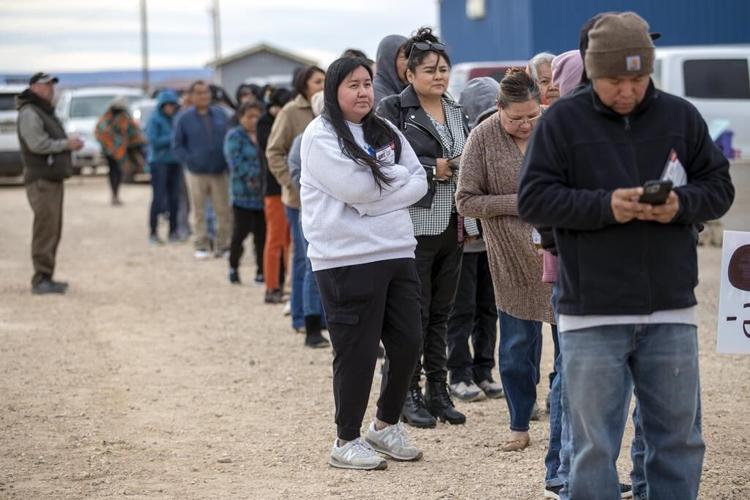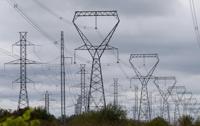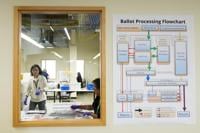WASHINGTON (AP) — Voters for Kamala Harris and Donald Trump who cast their ballots for Tuesday’s presidential election had vastly different motivations — reflecting a broader national divide on the problems the United States faces.
AP VoteCast, an extensive survey of more than 115,000 voters nationwide, found that the fate of democracy appeared to be a primary driver for Vice President Harris’ supporters. It was a sign that the Democratic nominee’s messaging in her campaign’s closing days accusing Trump of may have broken through.
By contrast, Trump’s supporters were largely focused on immigration and inflation — two issues that the former Republican president has been hammering since the start of his campaign. Trump has pledged that would bring back factory jobs and that greater domestic oil production would flow through the economy and lower prices.
Overall, the presidential candidates’ coalitions, based on race, education and community type, appeared largely similar to the 2020 results. Preliminary AP VoteCast findings, however, hinted at some shifts among demographic groups that could be meaningful for the ultimate outcome, including among younger voters.
Voters’ conflicting views on key priorities set up a challenge for whoever ultimately wins the election to lead the world’s premier economic and military power. Voters saw the qualities of each candidate differently. They were more likely to describe Trump as a strong leader than they were Harris, but she had an edge over him on being seen as having the .
Harris and Trump voters couldn’t agree on what matters
About two-thirds of Harris voters said the was the most important factor for their votes. No other topic — high prices, , the future of free speech in the country or the potential to elect the first female president — was as big a factor for her backers.
Trump voters were more motivated by economic issues and . About half said high prices was the biggest issue factoring into their election decisions. About as many said that of the situation at the U.S.-Mexico border. Only about one-third of Trump’s voters said democracy was the most important factor for their vote.
About 1 in 4 said the assassination attempts against Trump were the most important factor in their vote, and about 1 in 10 said that about the legal cases against him. Those were secondary issues for Trump's voters, though.
Trump’s proposed tariffs on allies and enemies alike as well as mass deportation of unauthorized immigrants resonated with his supporters. About half his backers labeled the economy and jobs as the top issue facing the country, while about one-third said the top issue was immigration.
Harris’s base, by contrast, was focused on a broader range of issues. About 3 in 10 called the economy a top issue, while about 2 in 10 said abortion and about 1 in 10 named health care or climate change.
Small but possibly important shifts from 2020
Just as in 2020, more than 8 in 10 Trump voters were white, and more than 1 in 10 were nonwhite. Harris’ coalition largely resembled the diverse group that President Joe Biden assembled four years ago. About two-thirds of Harris’s backers were white, similar to Biden, and about one-third were nonwhite.
About half of women backed Harris, while about half of men went for Trump. That appears largely consistent with the shares for Biden and Trump in 2020.
Other key elements of the candidates’ coalitions appeared to hold as well. More than half of voters with a college degree backed Harris, and about half of those without a college degree voted for Trump. Harris performed more strongly in cities and suburbs nationally than Trump did, while Trump drew more support in small towns and rural areas.
Preliminary AP VoteCast data suggested that some groups may have shifted, though, and any such changes could be significant in swing states where margins are likely tight.
One potential trend could be among younger voters, whose political lives have been shaped by the presence of Trump, now in his third presidential election. Voters under age 30 are a fraction of the total electorate. But about half of them supported Harris, compared to the roughly 6 in 10 who backed Biden in 2020. Slightly more than 4 in 10 young voters went for Trump, up from about one-third in 2020.
Most Trump and Harris voters motivated in support of their candidate
Both candidates generated loyalty among their coalitions, a change from four years ago when Trump was ousted from the White House by Joe Biden.
In 2020, about half of Biden’s backers said their vote for him was cast in opposition to Trump, and about half said their vote was for Biden. This year, roughly two-thirds of Harris voters said they were motivated to vote in favor of her. Only about one-third were voting in opposition to Trump.
Enthusiasm for Trump within his base held steady. Similar to in 2020, about 8 in 10 Trump voters said they cast their ballot in a sign of support for him, rather than to simply oppose his opponent.
Voters give Harris an edge on moral character, Trump on being a strong leader
The candidates had different strengths in the eyes of voters. Slightly more than half of voters said Harris has the moral character to be president, compared to about 4 in 10 who said that about Trump.
Nearly 6 in 10 said Trump lacked the moral character to be president, a reflection of his , his often , his and his that fed into the Jan. 6, 2021, insurrection. Slightly fewer than half said Harris did not possess the morality to be president.
But voters gave Trump an edge on being a strong leader. Slightly more than half of voters described Trump as a strong leader, and slightly fewer than half said the same about Harris.
About 6 in 10 said Harris has the mental capability to serve effectively as president, compared to about half who said that about Trump.
___
AP reporter Hannah Fingerhut contributed to this report.
__
AP VoteCast is a survey of the American electorate conducted by NORC at the University of Chicago for Fox News, PBS NewsHour, The Wall Street Journal and The Associated Press. The survey of more than 115,000 voters was conducted for eight days, concluding as polls closed. Interviews were conducted in English and Spanish. The survey combines a random sample of registered voters drawn from state voter files; self-identified registered voters using NORC’s probability based AmeriSpeak panel, which is designed to be representative of the U.S. population; and self-identified registered voters selected from nonprobability online panels. The margin of sampling error for voters is estimated to be plus or minus 0.4 percentage points. Find more details about AP VoteCast’s methodology at .









































